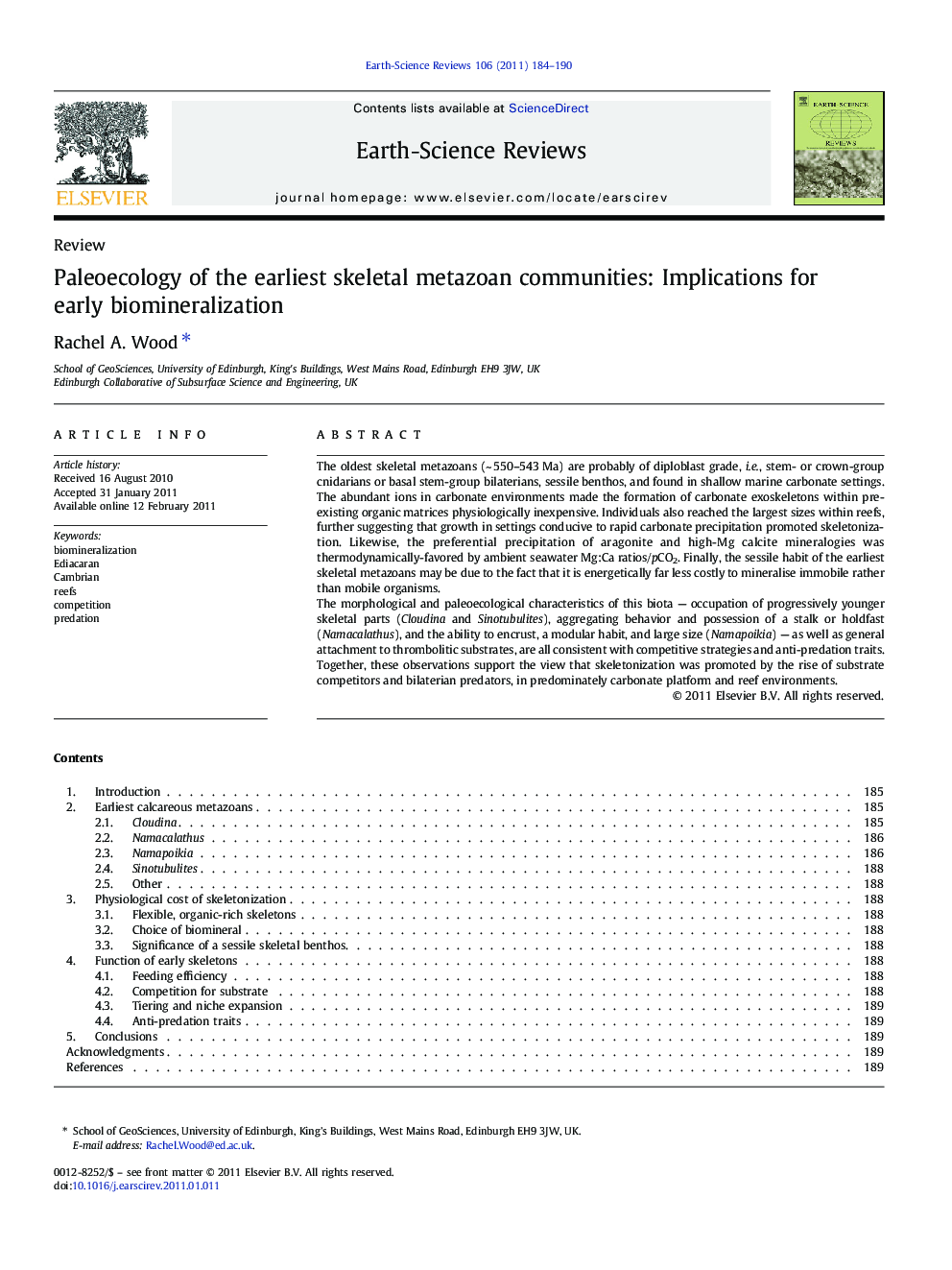| کد مقاله | کد نشریه | سال انتشار | مقاله انگلیسی | نسخه تمام متن |
|---|---|---|---|---|
| 4726158 | 1640004 | 2011 | 7 صفحه PDF | دانلود رایگان |

The oldest skeletal metazoans (~ 550–543 Ma) are probably of diploblast grade, i.e., stem- or crown-group cnidarians or basal stem-group bilaterians, sessile benthos, and found in shallow marine carbonate settings. The abundant ions in carbonate environments made the formation of carbonate exoskeletons within pre-existing organic matrices physiologically inexpensive. Individuals also reached the largest sizes within reefs, further suggesting that growth in settings conducive to rapid carbonate precipitation promoted skeletonization. Likewise, the preferential precipitation of aragonite and high-Mg calcite mineralogies was thermodynamically-favored by ambient seawater Mg:Ca ratios/pCO2. Finally, the sessile habit of the earliest skeletal metazoans may be due to the fact that it is energetically far less costly to mineralise immobile rather than mobile organisms.The morphological and paleoecological characteristics of this biota — occupation of progressively younger skeletal parts (Cloudina and Sinotubulites), aggregating behavior and possession of a stalk or holdfast (Namacalathus), and the ability to encrust, a modular habit, and large size (Namapoikia) — as well as general attachment to thrombolitic substrates, are all consistent with competitive strategies and anti-predation traits. Together, these observations support the view that skeletonization was promoted by the rise of substrate competitors and bilaterian predators, in predominately carbonate platform and reef environments.
Journal: Earth-Science Reviews - Volume 106, Issues 1–2, May 2011, Pages 184–190